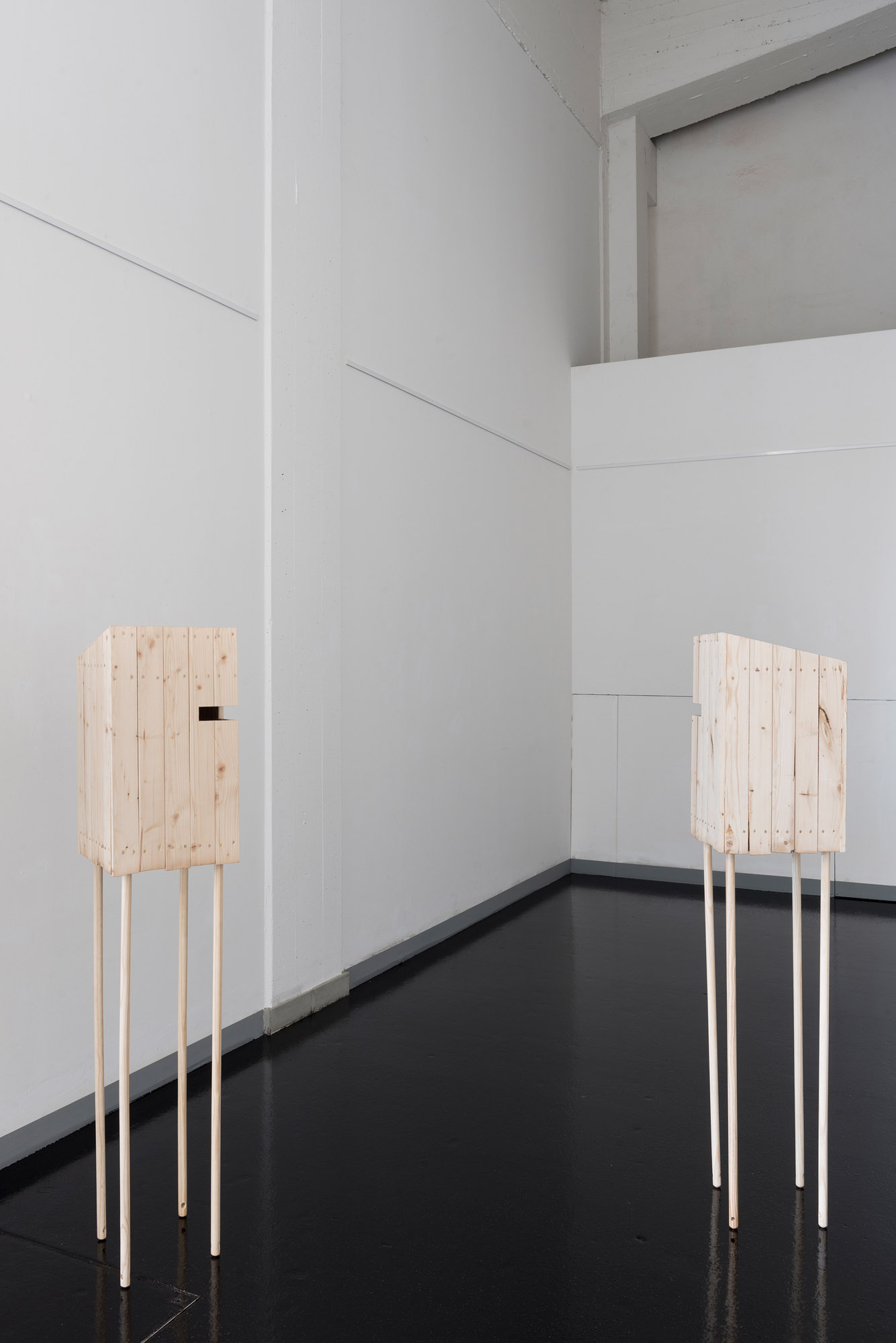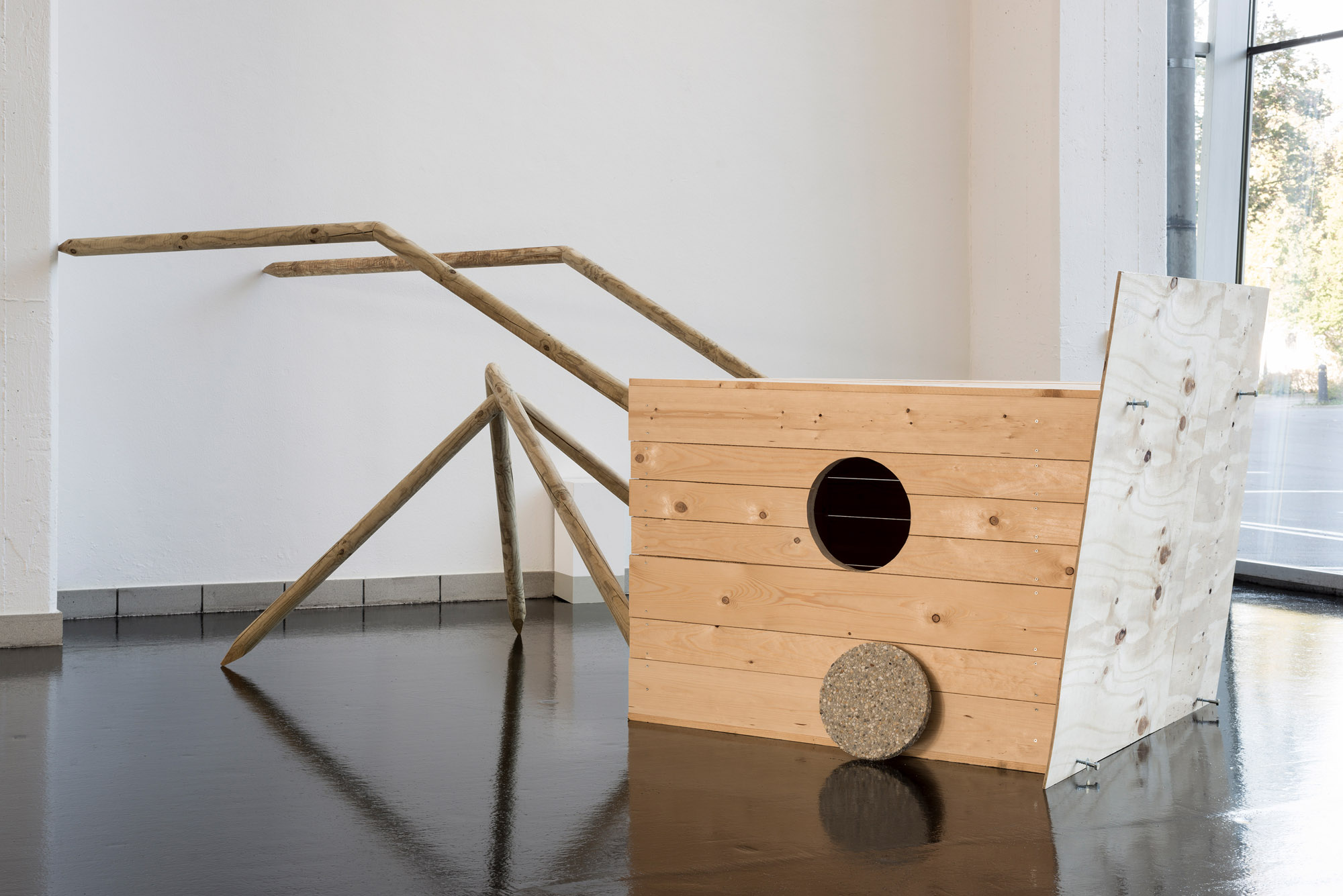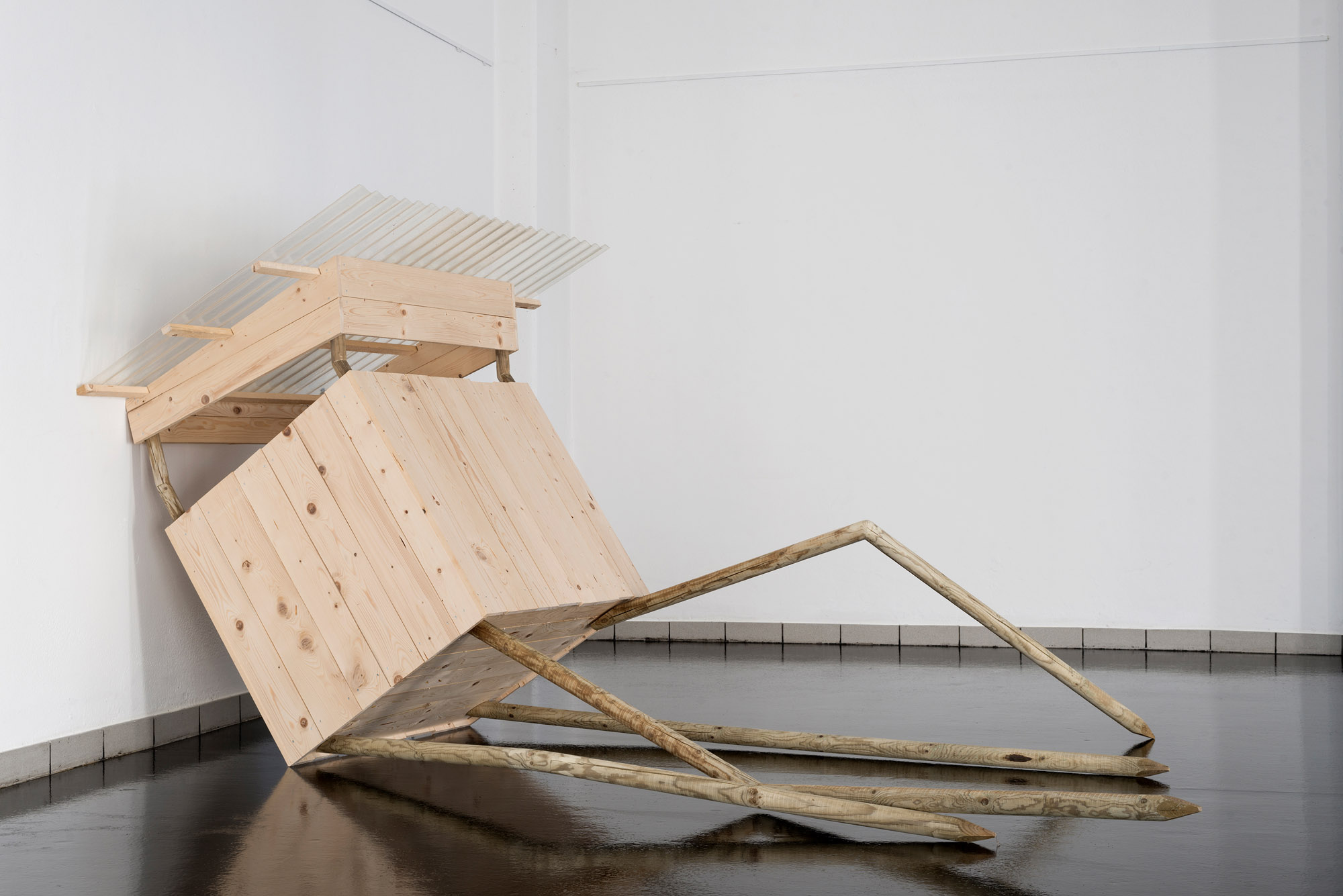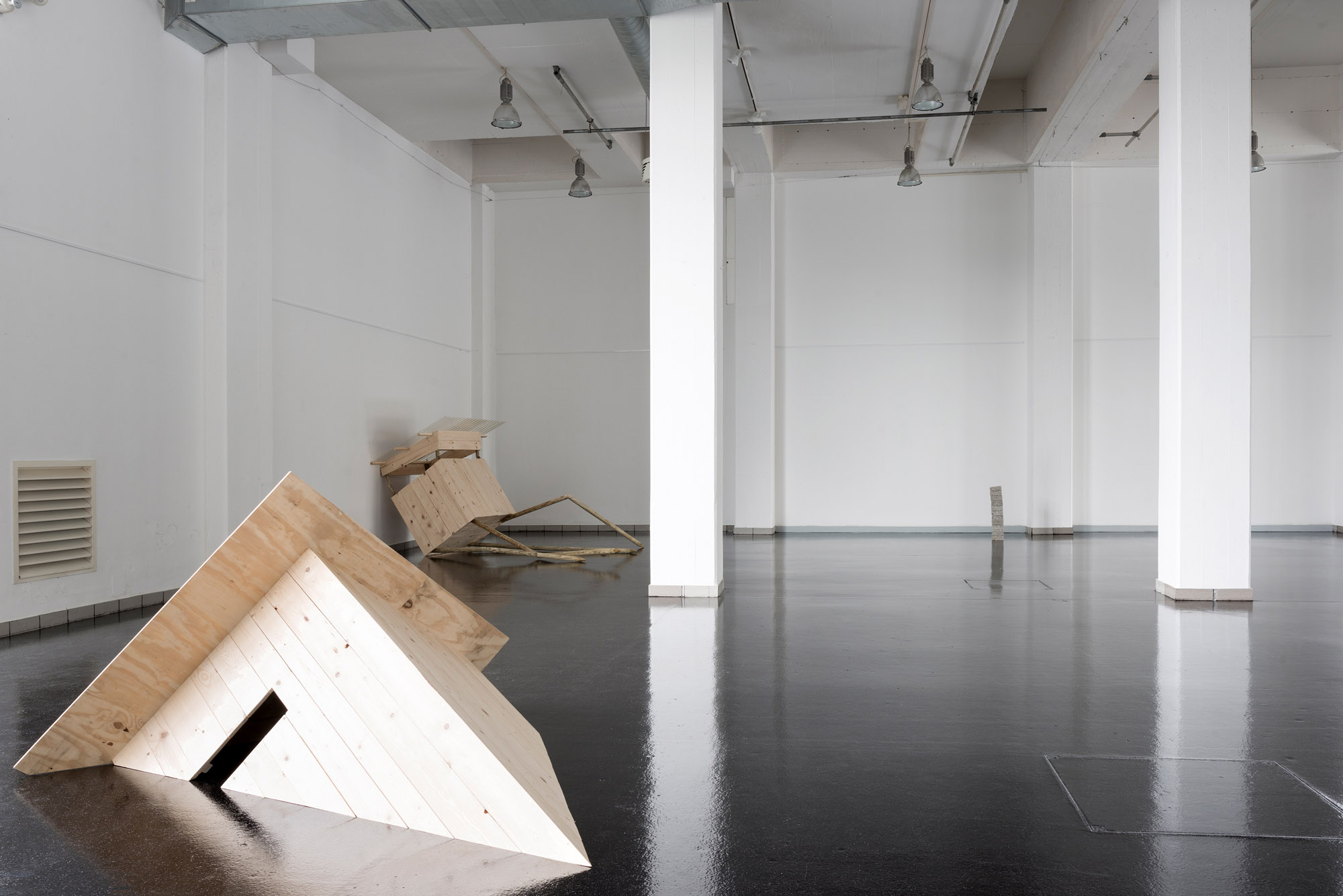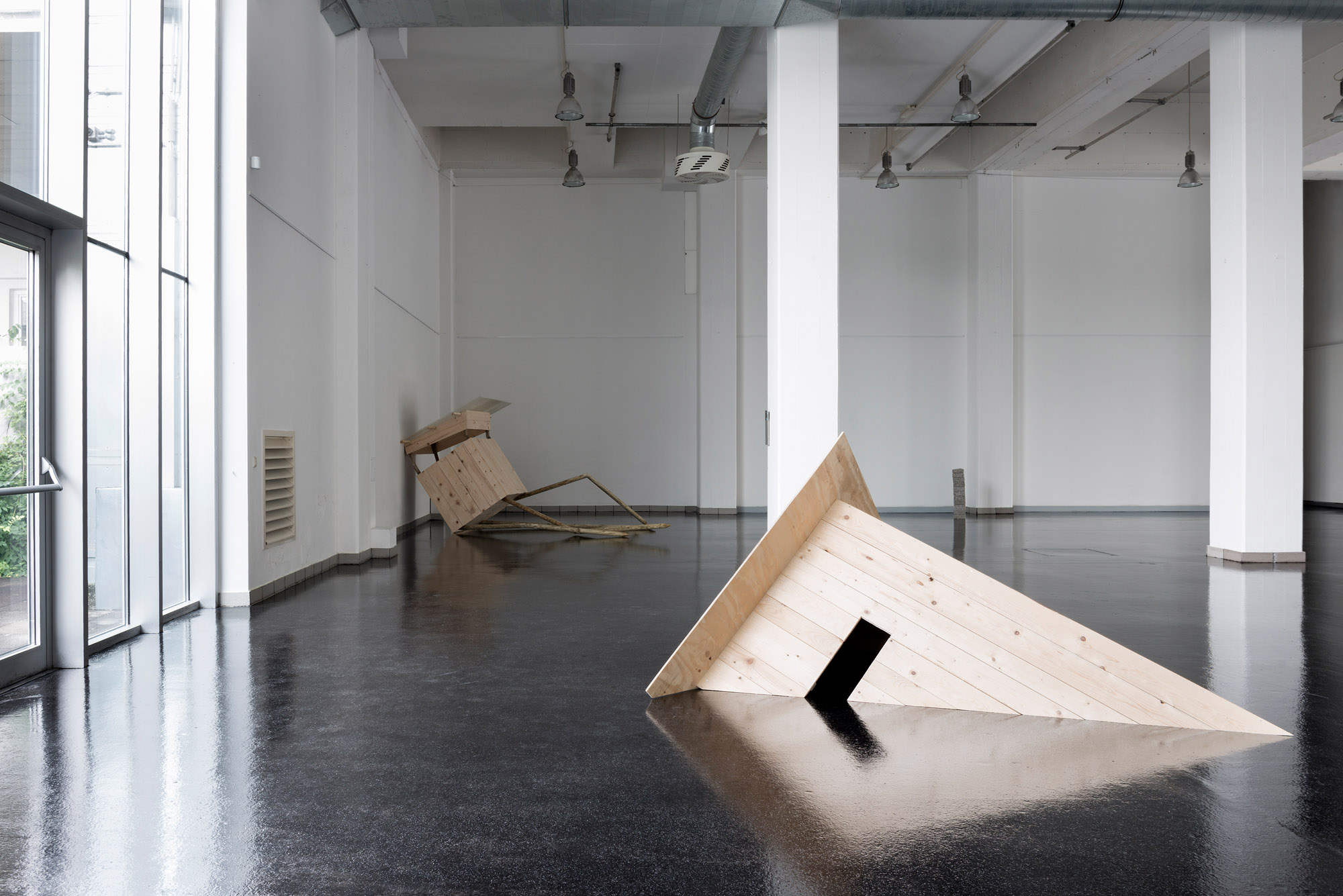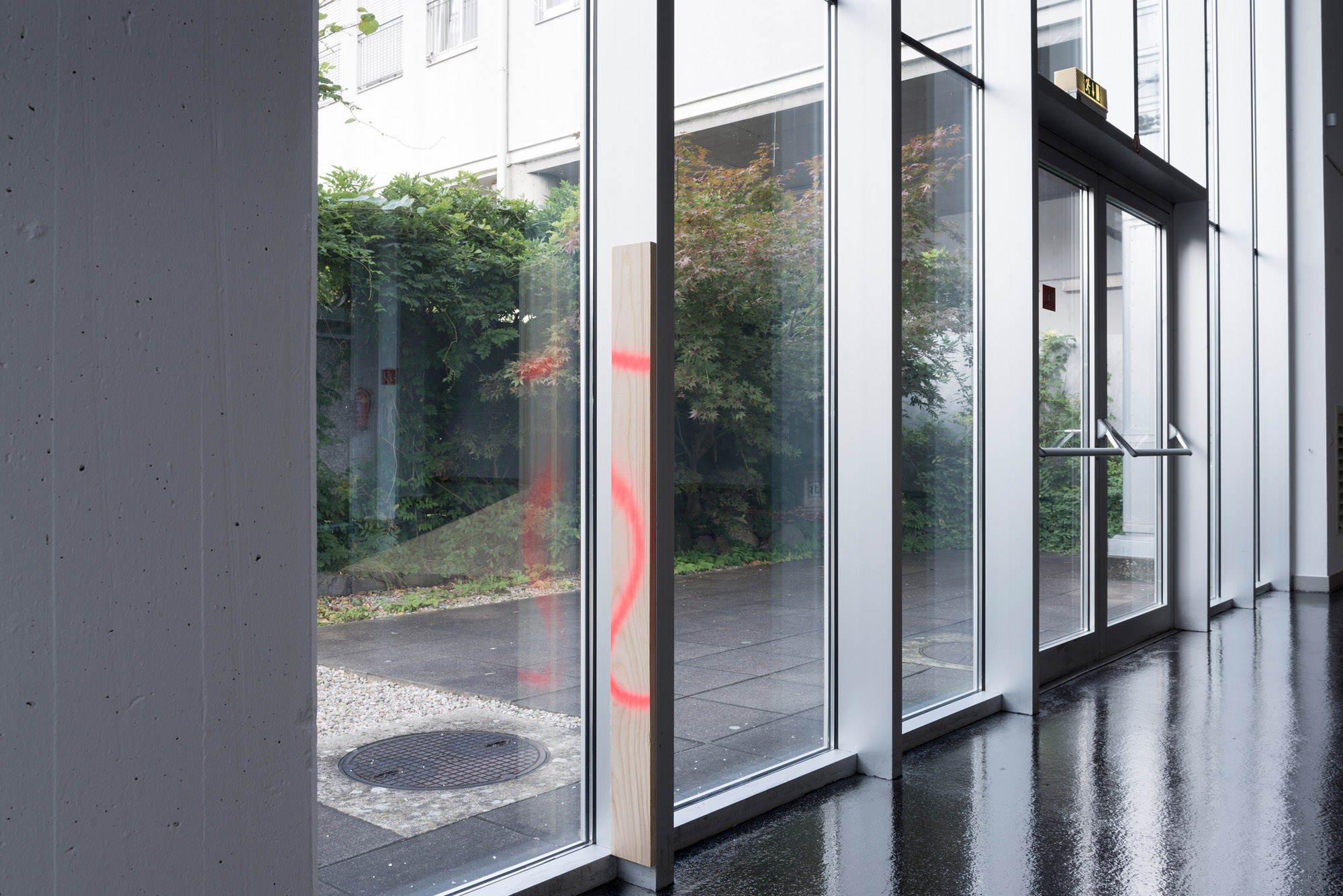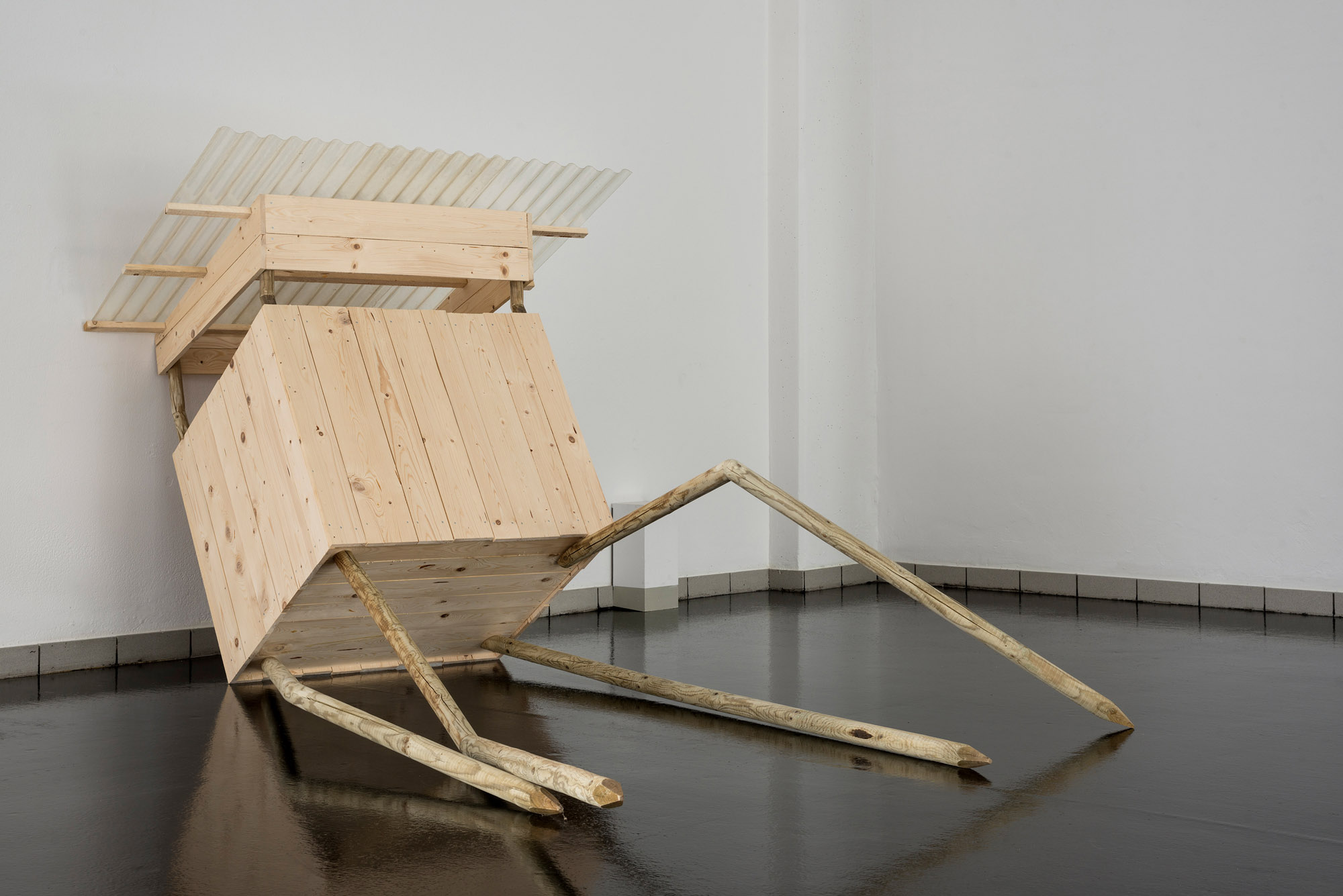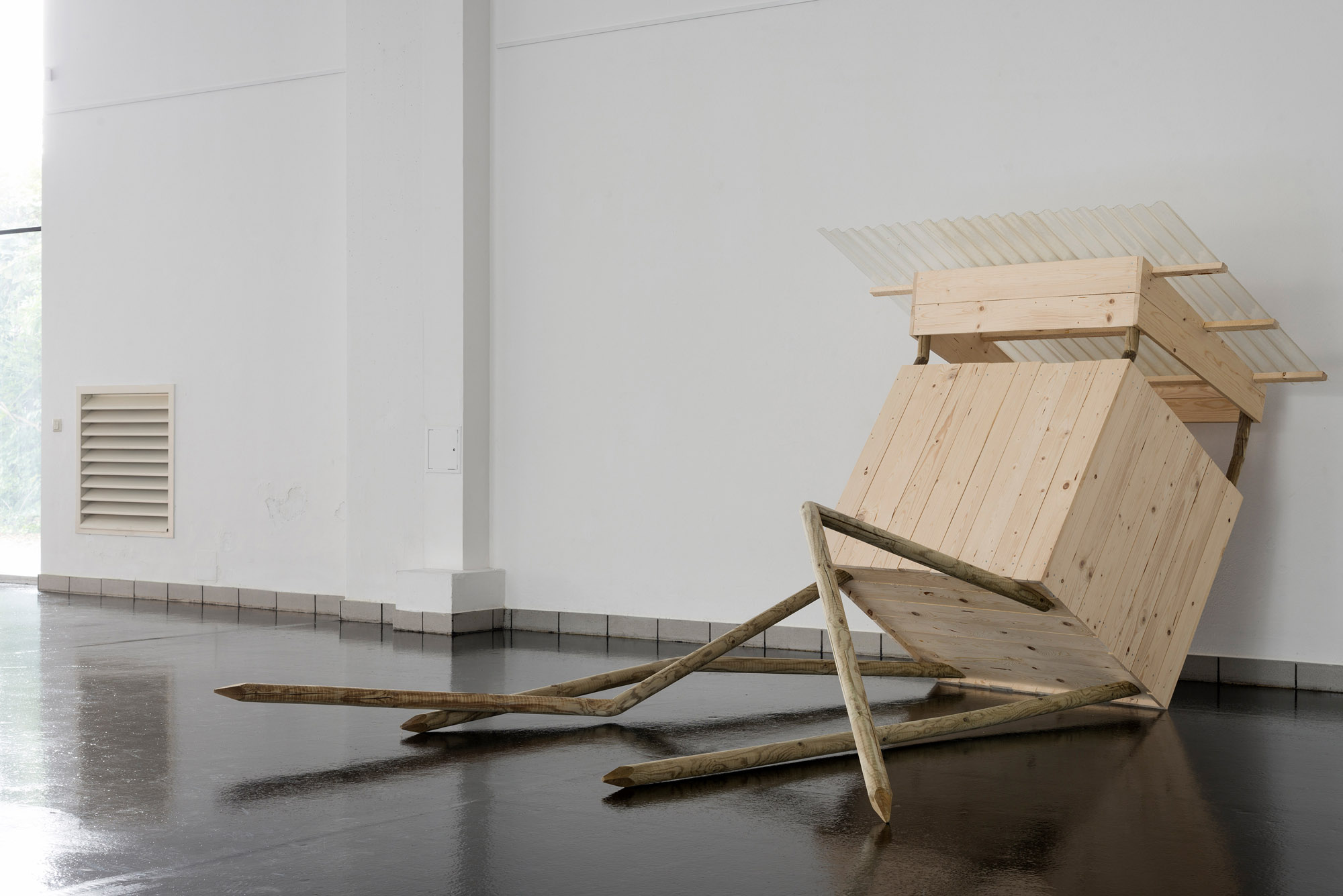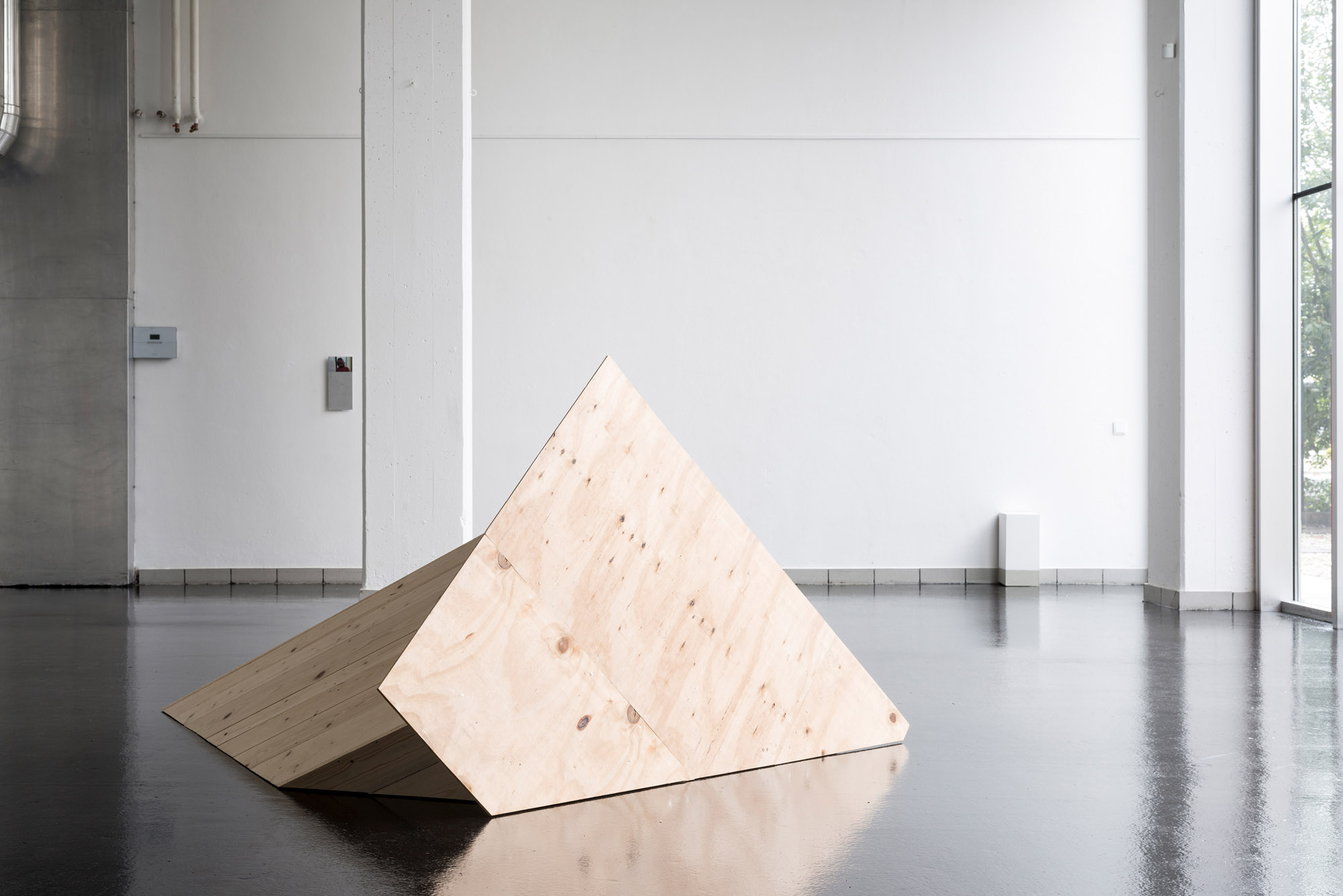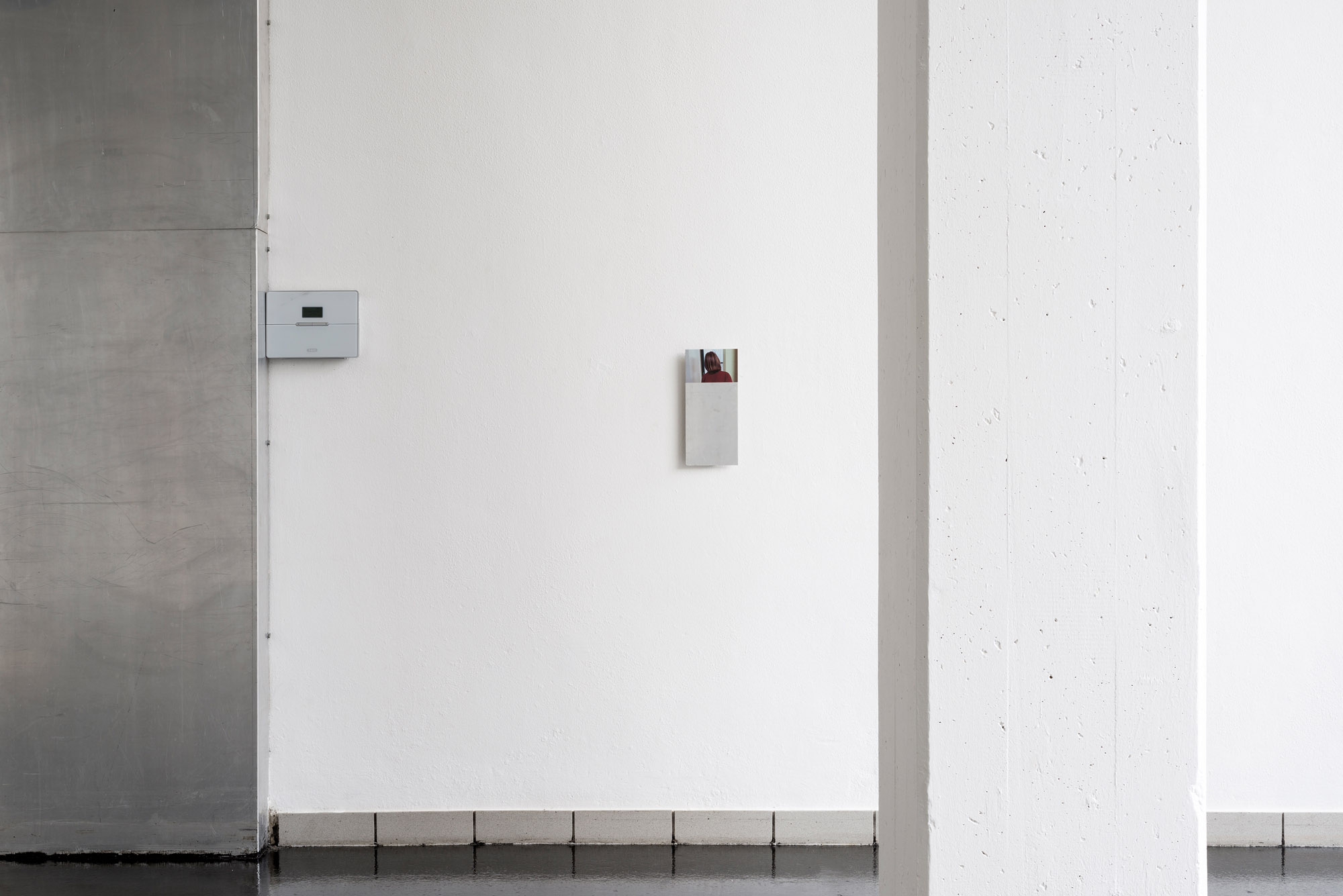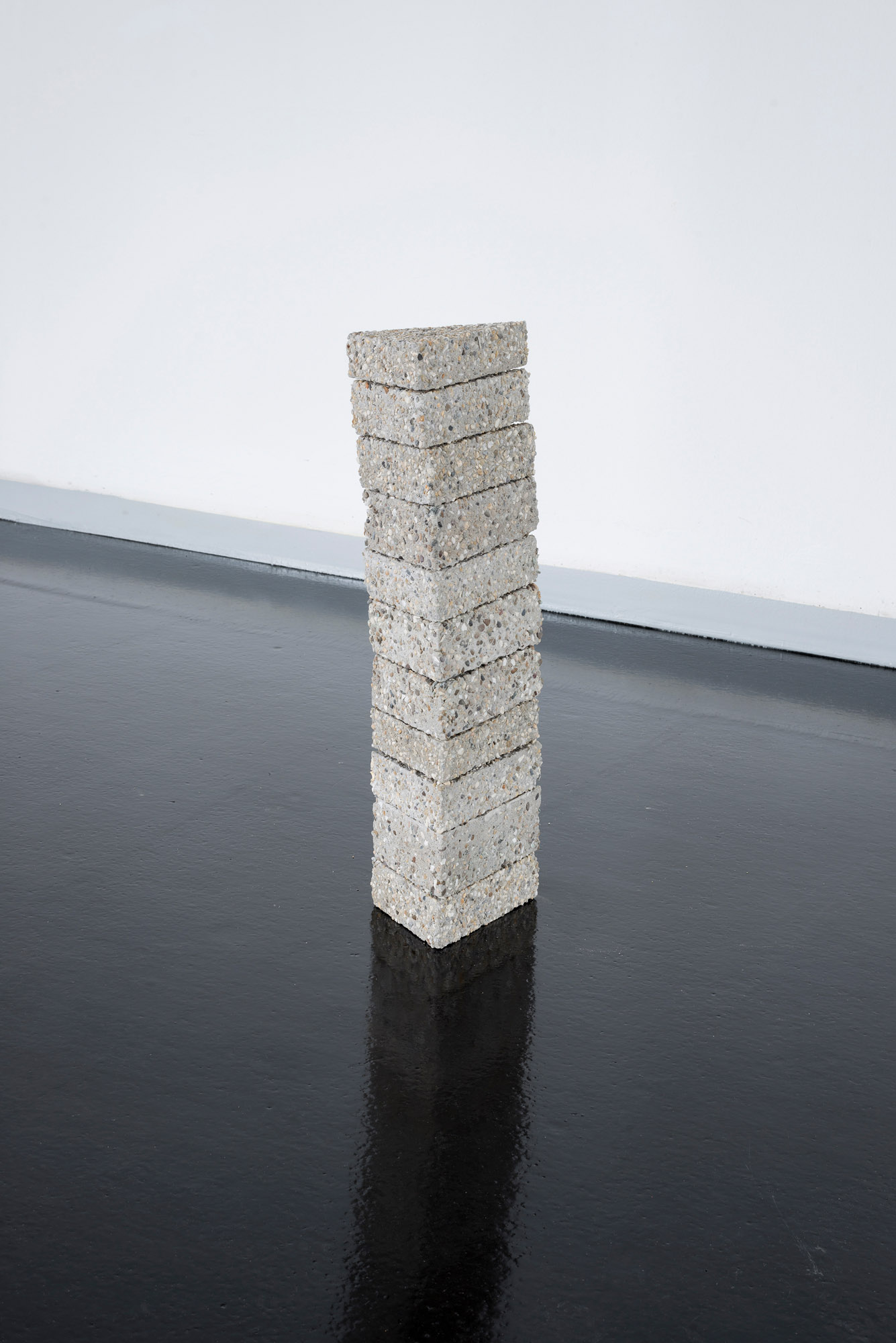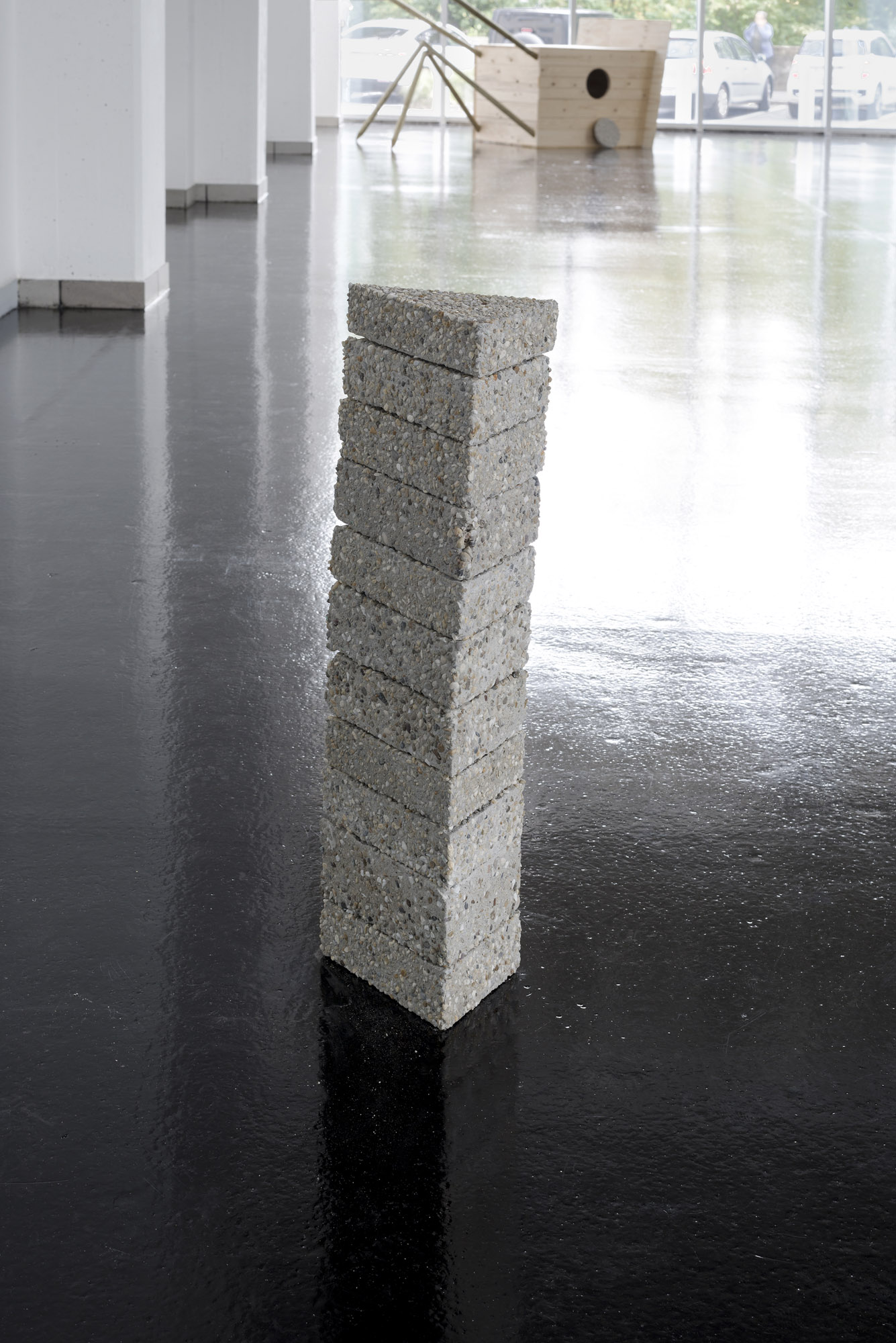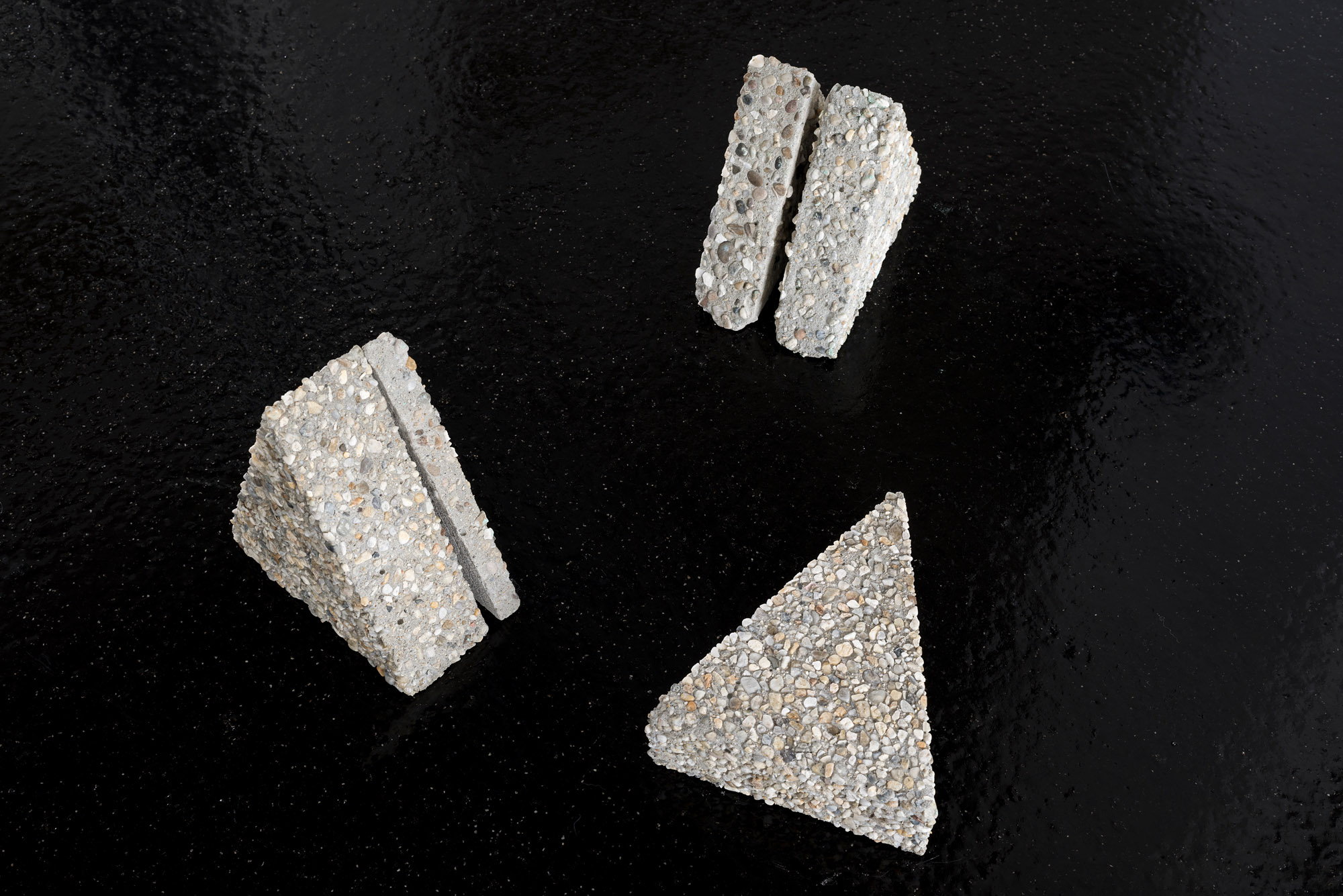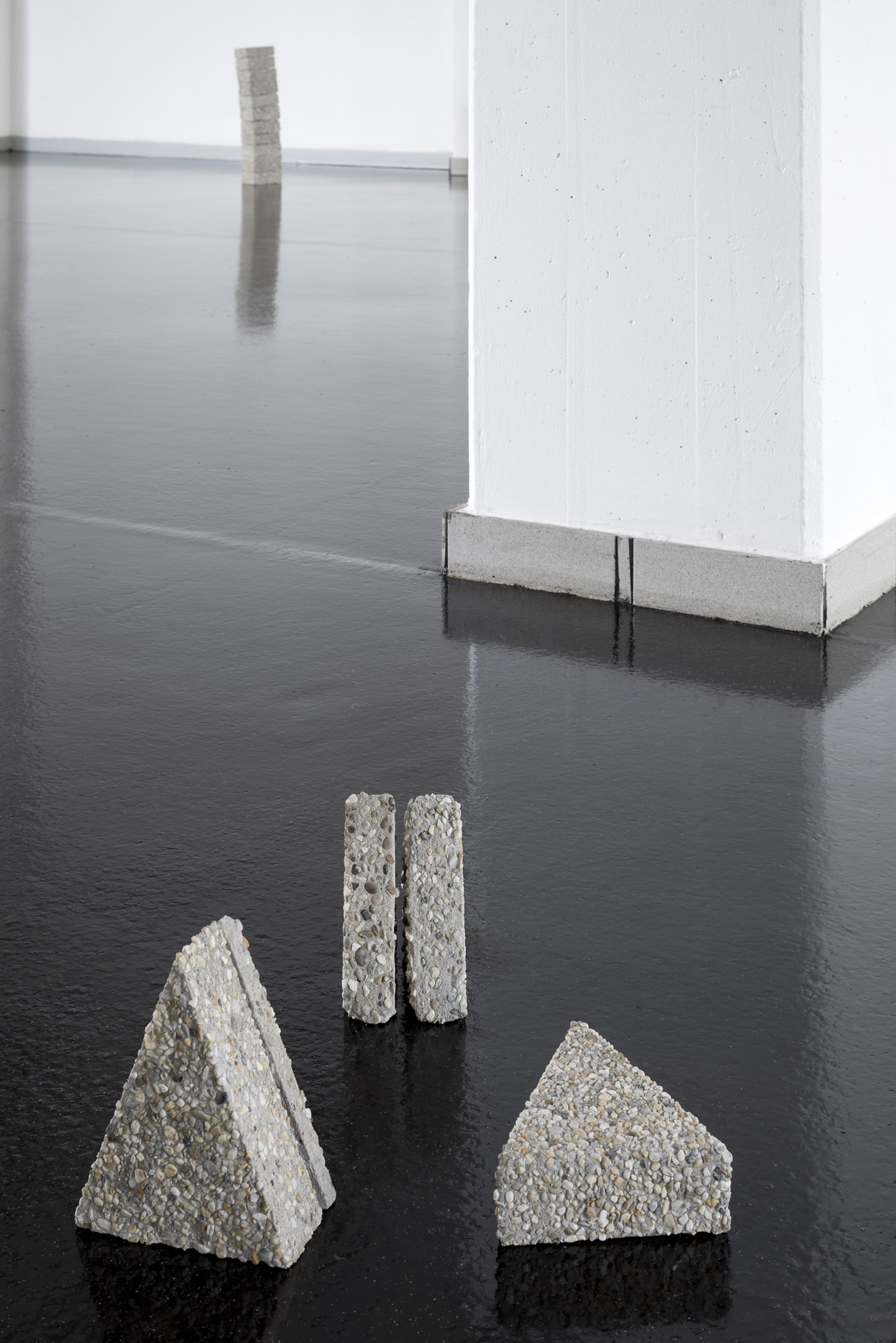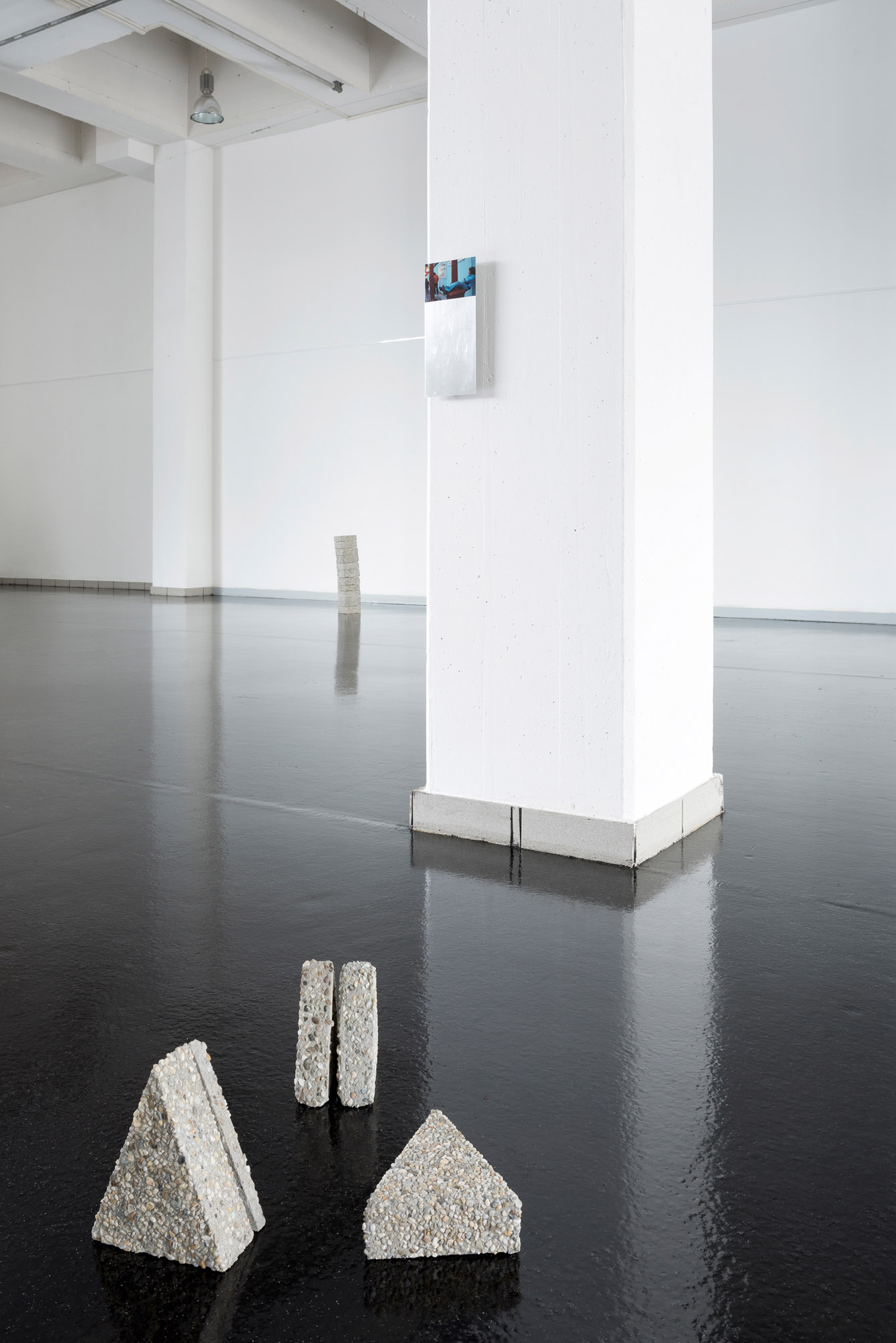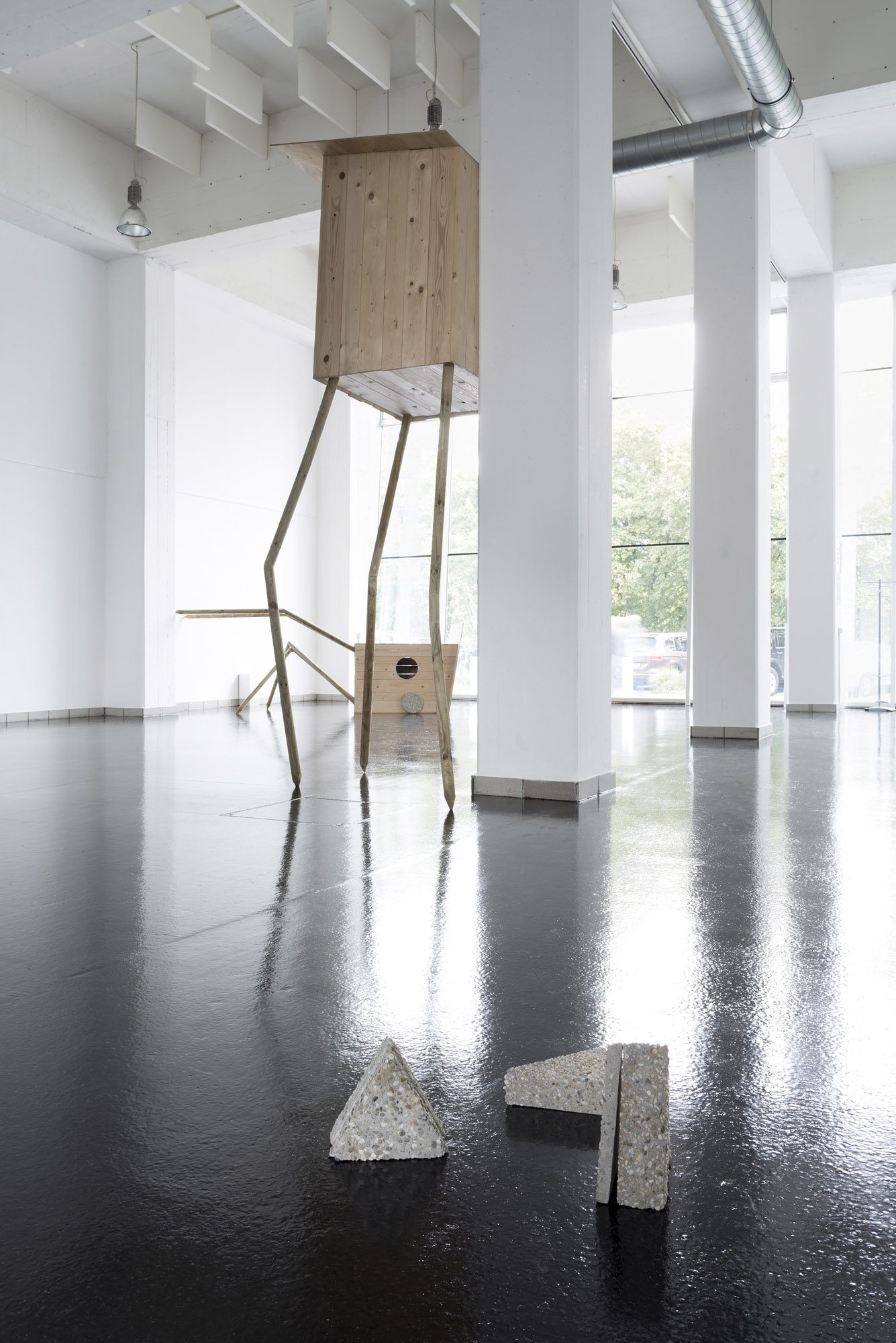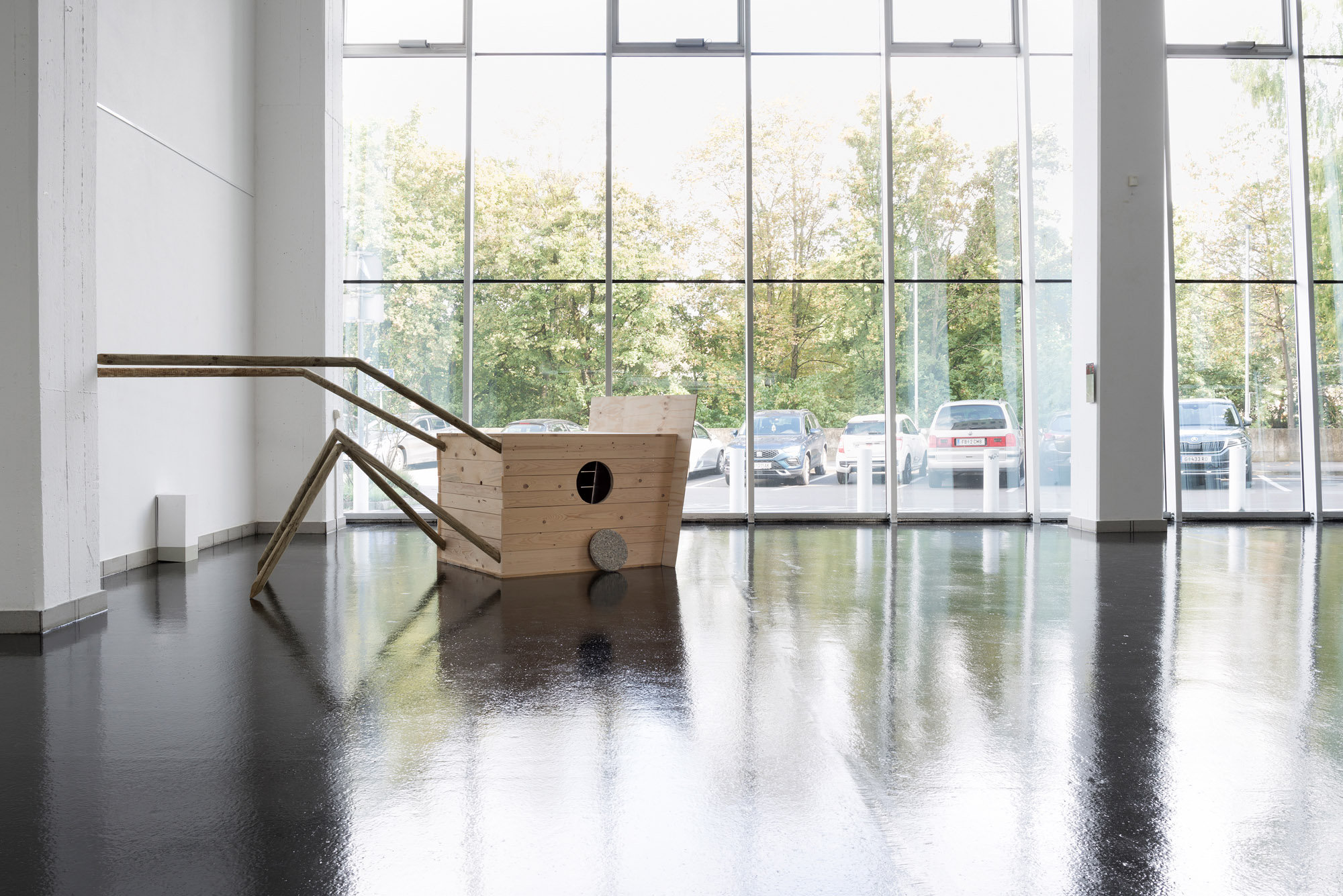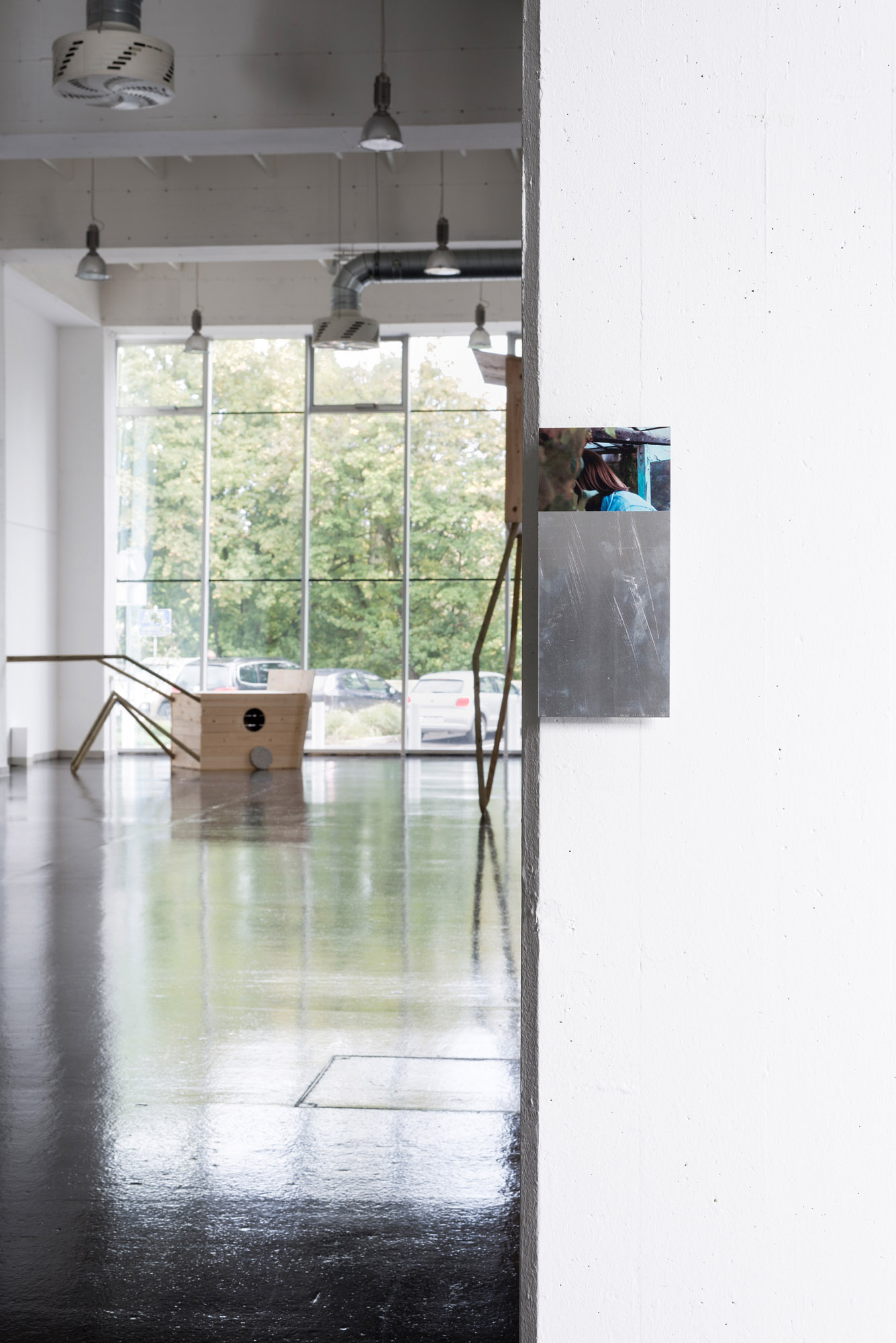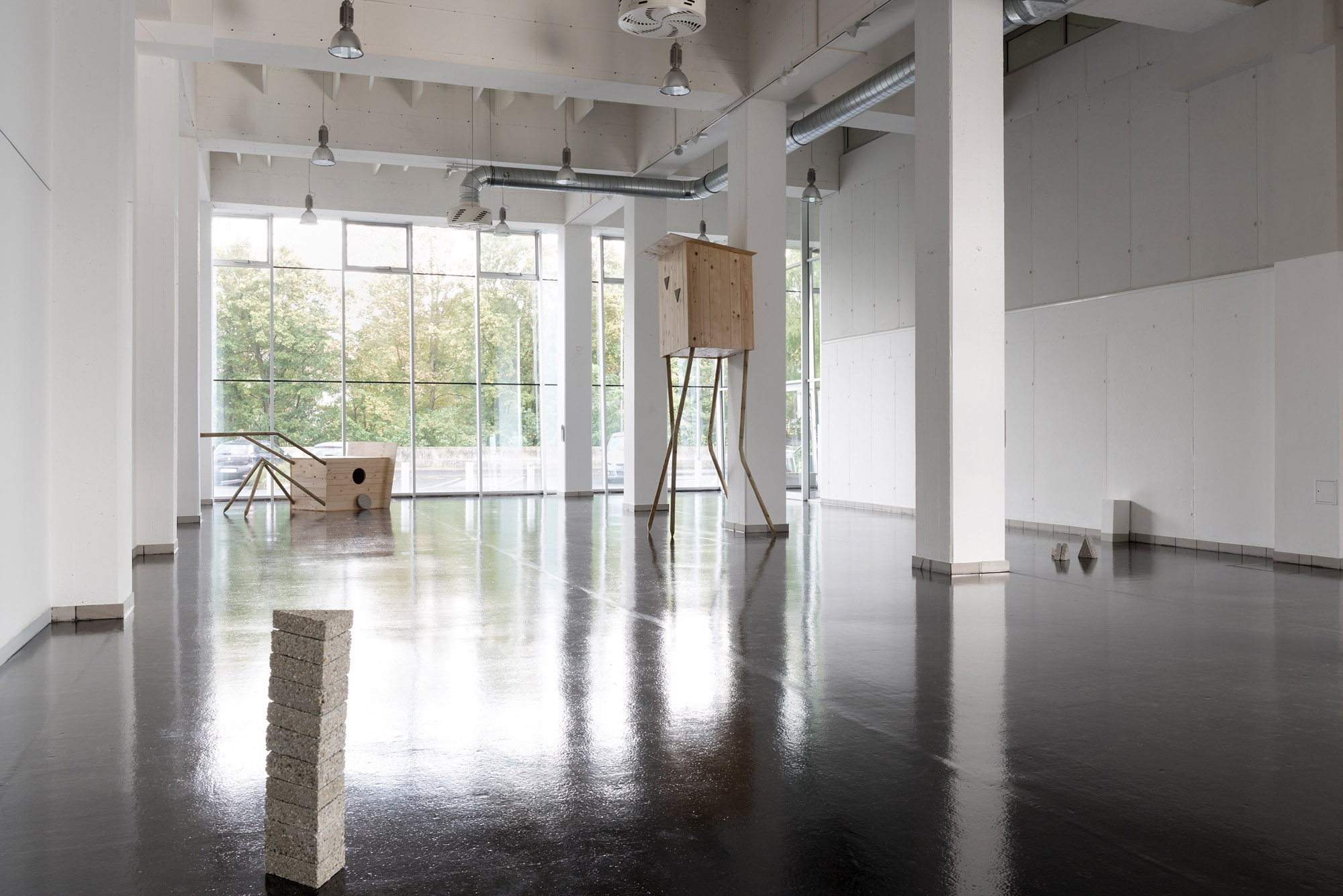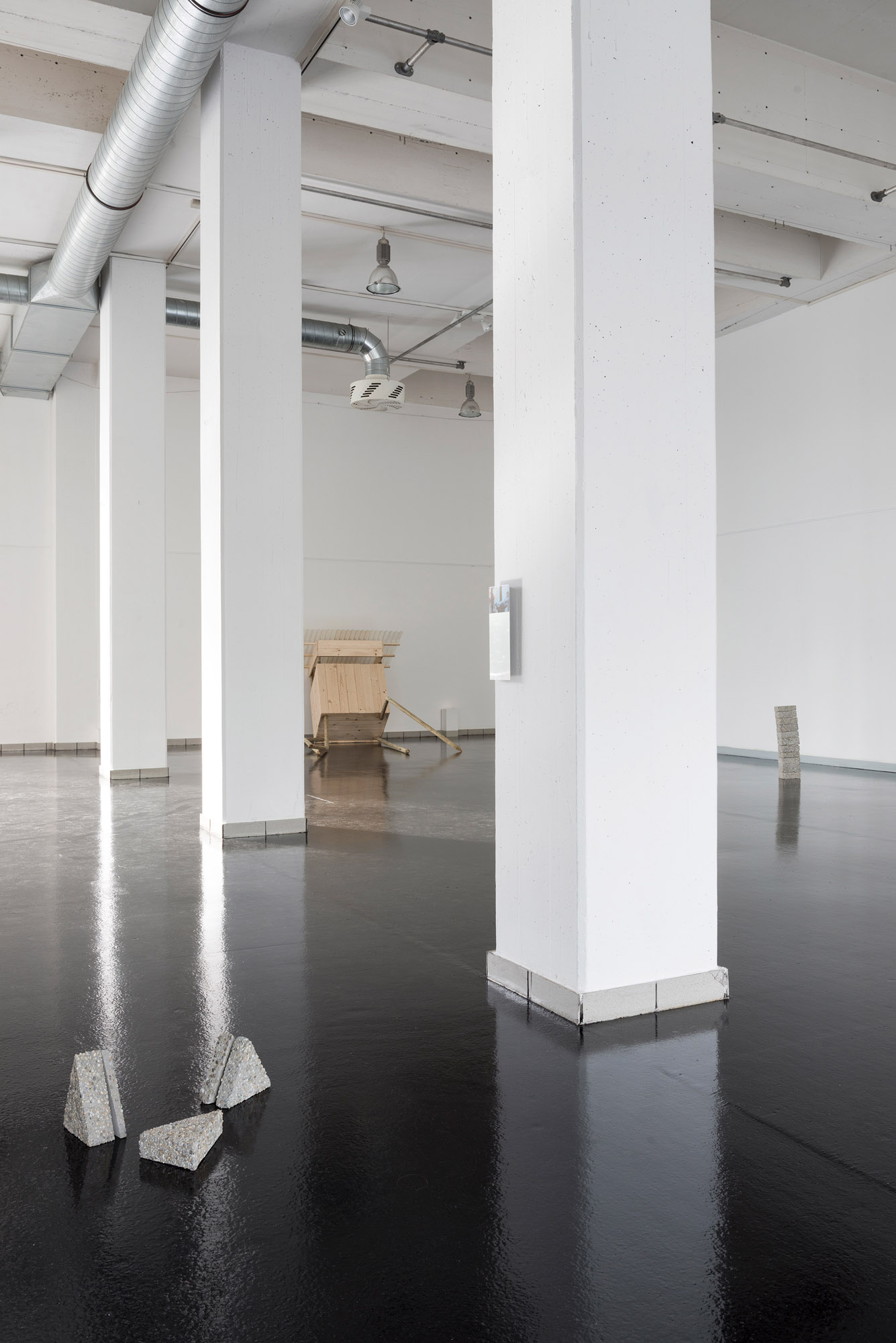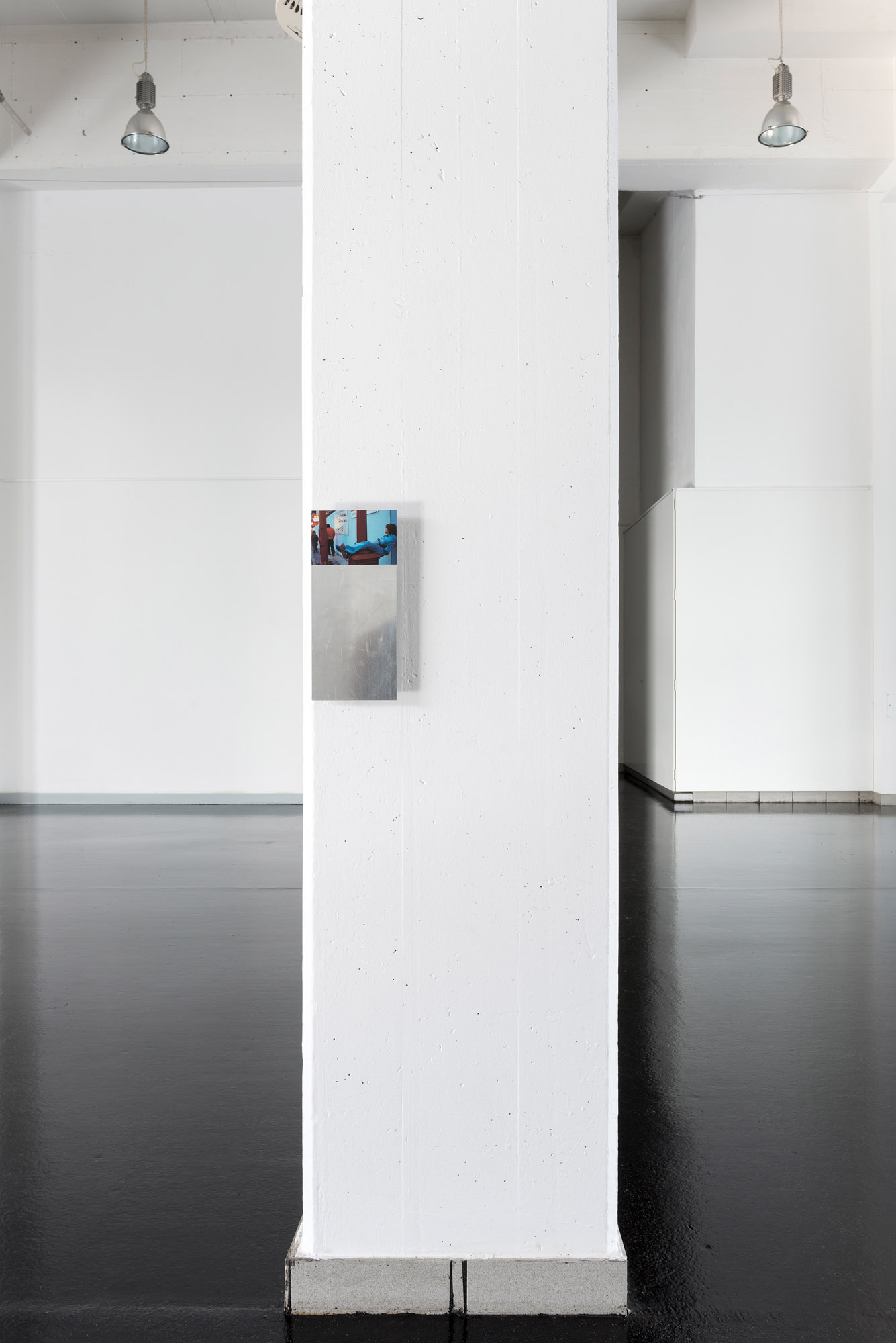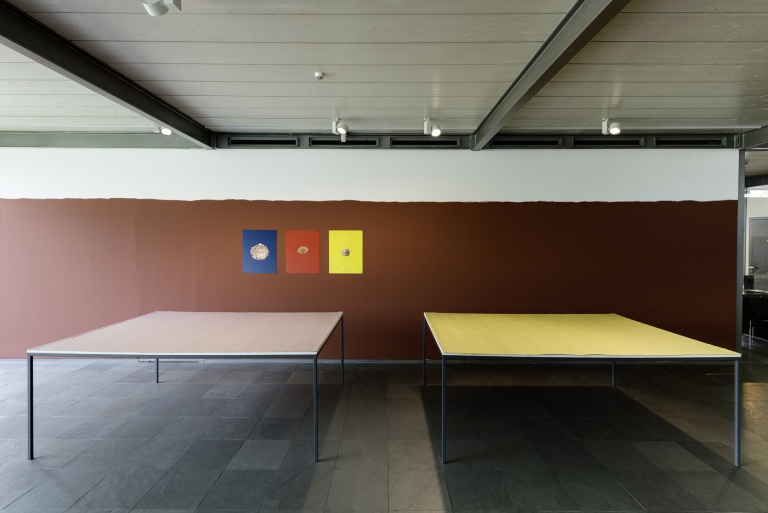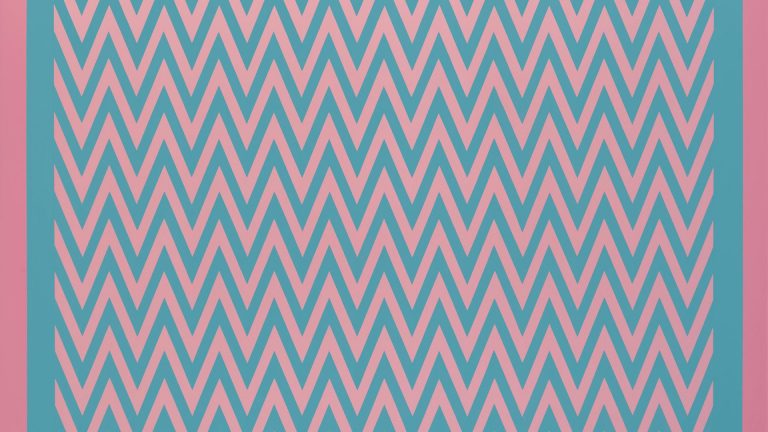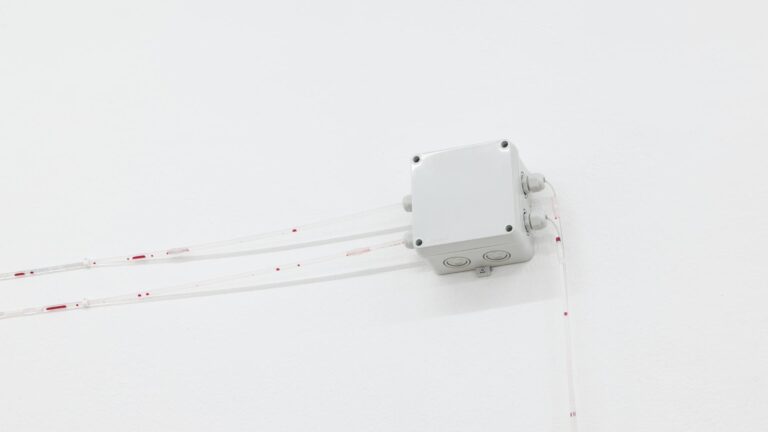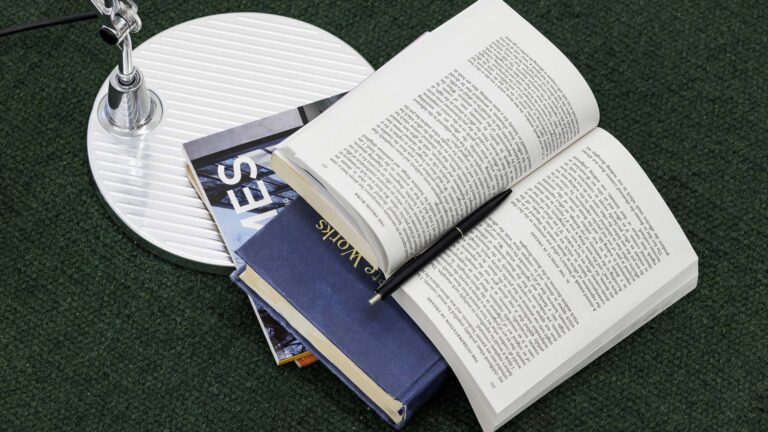Artist: Veronika Eberhart
Exhibition title: I’m Going in A Field
Curated by: Michael Mehsner
Venue: Kunsthalle Feldbach, Feldbach, Austria
Date: September 25 – November 6, 2022
Photography: Markus Krottendorfer / all images copyright and courtesy of the artist and Kunsthalle Feldbach
“When I prepared this little talk for you, it was early in the morning. I could see Baltimore through the window and it was a very interesting moment because it was not quite daylight and a neon sign indicated to me every minute the change of time, and naturally there was heavy traffic and I remarked to myself that exactly all that I could see, except for some trees in the distance, was the result of thoughts actively thinking thoughts, where the function played by the subjects was not completely obvious. In any case the so-called Dasein as a definition of the subject, was there in this rather intermittent or fading spectator. The best image to sum up the unconscious is Baltimore in the early morning.”
—Lacan, 1966
Baltimore with its neon lights telling the time and the cars on its streets might have been the epitome of the unconscious for Lacan on that morning in October 1966. But to see the unconscious in artefacts by humans one does not have to travel far. For Lacan, one of the most significant psychoanalysts since Freud, the unconscious is immanent to the subject and at the same time not internal or personal. Rather, it is found throughout culture, in everyday products, in the sculptures in this exhibition but also in night dreams and especially in language. At first glance, language, dreams, neon lights and deerstands* have little in common. But if we reflect on the fact that all cultural production is based on knowledge transfer and therefore on the mediation of language, things look different. It is an external structure that everyone must internalise so as to write the subjects’ most intimate and sincere thoughts. Language is like the air to the lungs and vice versa. An intimate otherness and an excluded intimacy. For this interwoven relationship, which indicates the inside in the outside and the outside in the inside, Lacan created the neologism extimité, composed of the prefix ex (Latin: outside) and intimité (French: “intimacy”, “sphere of privacy”, “familiarity”).
Veronika Eberhart’s sculptures in the exhibition “I’m Going in A Field” allow us to understand this concept spontaneously. She reconfigures materials that catch the eye when looking at the landscape. Exposed aggregate concrete, wood, aluminium. Her sinking, broken and dormant sculptures materialize the ever-explosive relationship between the subject and nature that has existed throughout human history.
The anthropomorphic seeming works are a field of human subjectivity and show the inside on the outside. Central object/ subject of the exhibition is the deerstand*. On one hand, it functions as a gravitational centre of identification for human experience, but also confronts us with our relation to nature. The deerstand* literally rises above the land, culture rises above nature, human above animal. In this respect, it indicates human hubris, the arrogance to subdue nature), to govern it from a safe distance and to decide on life and death. If we take the deerstand* seriously as a cultural artefact and as Lacan does, see it as the result of unconscious activity, then it stands for man’s instinctively aggressive nature, which strives for the subjugation of natural space. If nothing else, climate change can be understood as nature’s retaliation to this almighty behaviour. A counterattack that, as Eberhart’s sculptures show, makes us stagger and exposes us in our dependence and fragility.
In the series of works from I’m Going in A Field, this far gentler moment is shown, which bears comparison to ideational realisation. It is as if the power to act was restored to the Southeast Styrian region by addressing cultural creation in its precariousness and therefore scrutinising the implicit relationship of dominance.
In addition to the deerstand*, Eberhart shows five UV prints on aluminium plates (Untitled). It depicts a person who we can assume is inspecting the field presented to them. Our gaze always falls back on us through the polished aluminium on the lower edge of the pictures. The retrospective nature of the reflection shows us that when we look at it, we are a constituent part of the current configuration that we call reality. In doing so, what is observed not only creates this reality in an equal way, but also inscribes itself in us, as we inscribe ourselves in it.
“You must, when contemplating nature,
Attend to this, in each and every feature:
There’s nought outside and nought within,
For she is inside out and outside in.”
—Goethe (1819)
*raised hide, blind
-Text by Daniela Kammerer



